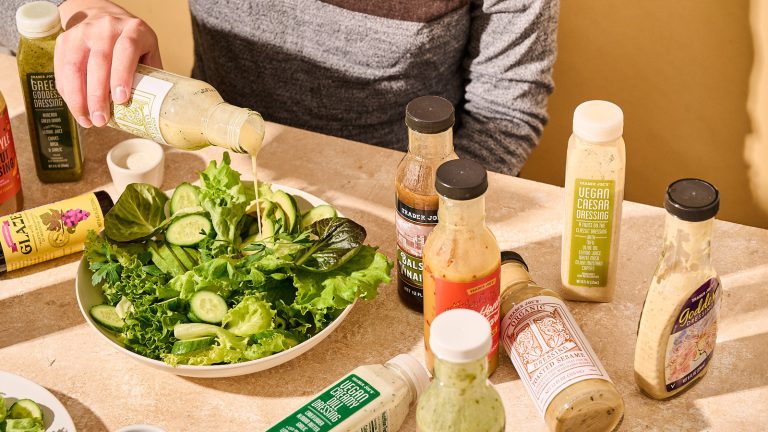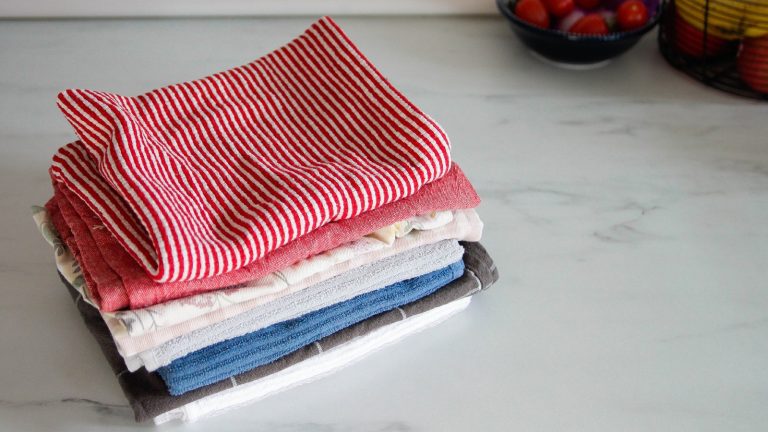Everyone’s always telling us to drink more water, but no one’s talking about how boring that is. Yes, we know — water is essential for our everyday health and, well, for being alive. But when you could choose tasty, caffeinated drinks or a yummy immunity-boosting ginger ale mocktail, plain old water easily loses its appeal.
Here’s where it’s time to get creative in the kitchen. Water may taste bland on its own, but adding fruits and herbs helps bring bright flavors and tons of added health benefits. If hydration is your goal, the addition of fruits will make it feel less like a chore and more like a treat.
It’s as easy as slicing up your fruits and herbs and plopping them a pitcher. The longer you let that fresh produce seep into your water, the more flavorful it will be! Go beyond basic lemon water and get creative with berries, mint, and even cucumber. Immune-boosting antioxidants, vitamins that make your skin glow, and refreshing flavors that actually make you want to sip — infused waters are a no-brainer.
Lemon and mint
Lemon water is the staple of infused waters. It’s classic, never overdone, easy to make, and gives water just the right amount of flavor. Lemon is a naturally rich source of vitamin C, which can potentially aid in digestive support, immune health, and overall detoxification. It’s for sure the number one ingredient that pops up when you Google “detox drinks,” as adding it to water may benefit your skin and metabolism. You can use any lemons for lemon water, but Meyer lemons are a favorite because of their more-sweet-than-acidic flavor.
Pair lemon water with mint, however, and you’re in a new (better-tasting) ball game! Mint adds a cooling effect and has long been prized for its soothing properties, particularly when it comes to digestion and stomach pain. Together, lemon and mint create a crisp, refreshing sip that’s zingy and as tangy as you’d like it to be. The cool mint smooths out the tartness of lemon, making this combo simply perfect. This would also work well in hot water; simply add fresh lemon and a few sprigs of mint to the hot water, stir, let it steep, and sip.
Orange and thyme
Oranges provide a softer, slightly sweeter alternative to lemon, with similar vitamin C-rich benefits and a familiar citrus flavor. Orange-infused water is delightful on its own, but there’s always a way to add more dimension and complexity. Any orange variety will do, but Valencia oranges are ideal, thanks to their distinct juiciness — they’re more likely to impart flavor into the water. Thyme is an herb you might not have thought to infuse in water. Herby and peppery, it imparts a subtly minty complexity that gives a little kick of sophistication to the brightness of the orange.
If your spring garden isn’t bursting with thyme, there are other accompaniments for orange. Though it’s not technically an herb, we can’t help but suggest fresh ginger to swim alongside your orange. If you’ve got a knob of it sitting in your fridge, this is a great way to use up fresh ginger. Simply slice it up, drop it in, and savor sips that have sweet orange and a warm, gentle spiciness. Again, this combination would work well with boiling water, too. Add your orange, thyme, and ginger to hot water for a soothing and perfectly sweetened tea of your own.
Strawberry and basil
Citrus fruits work great in water, but don’t forget about berries. Jam-packed (no pun intended) with flavor, ripe strawberries can infuse water with a fruitier, sweeter taste than tart lemon does. So, for those in search of something to curb sugar cravings, this drink could work. Since you might not be able to extract a ton of strawberry flavor or nutrition when they’re in water (the fruit tends to absorb more of the water than vice versa), you could try muddling the berries a bit for a boost.
Fruit-infused waters are common, but basil might be throwing you off. Basil will add a subtle grassy earthiness and a bit of zest to the semi-sweet strawberry water. Plus, adding basil to strawberry water can help aid in blood sugar regulation and reduce the risk of inflammation and infection.
When whipping up this infusion, make sure to choose the ripest strawberries at the store, and look for fresh basil that isn’t wilting or browned. A good ratio is about one strawberry and one basil leaf per cup of water. You can even add a little zing and some extra color with some fresh lime.
Cucumber and rosemary
Cucumber-infused water is right up there with lemon water on the list of most common water infusions. Cucumbers themselves are over 95% water, so adding them to water will only benefit your hydration. Their subtle flavor makes them a versatile infusion ingredient; let a few cucumber slices float around in your water for a hint of flavor, or add more and let them infuse longer for a sip that tastes like a bite of fresh cuke.
Zest up the flavor with herbs like mint or rosemary. Rosemary adds an aromatic touch that pairs wonderfully with cucumber’s crispness. Its slightly piney flavor enhances the soothing taste of the cucumber and provides a refreshing, herbaceous note to the water. Rosemary’s antimicrobial properties can help ward off infection, and it’s thought to be helpful for those who struggle with high blood sugar.
Crush the rosemary and slice the cucumber, and add them to water in a pitcher. For best results, let the water infuse in the refrigerator anywhere from two to up to 24 hours. Feel free to keep topping the water off as you drink for a couple of days, but make sure to discard it after six days.
Lavender and blueberry
Does anything sound more elegant than lavender-infused water? While lavender is commonly known as a flower, it can also be considered an herb and comes from the mint family. Lavender-infused cocktails are common, but adding lavender to water is also an option.
Lavender not only offers that delightfully sweet, floral aroma we all know and love but also brings other potential benefits. It is well known for its calming and soothing properties, helping reduce stress and anxiety. Moreover, it can potentially aid in wound healing and even hair loss. For best results, try using blossomed, fresh lavender, rather than dried lavender. This way, you’ll get that soothing aroma and a nice purple hue.
To enhance the flavor of lavender, try pairing it with blueberries. Together, the light floral notes of lavender and the sweet, tart flavor of blueberries create a beautifully balanced infusion that feels utterly spa-like. While you can plunk your blueberries right into the water, muddling the fruits before eventually straining them out could enhance the flavor even further. This will release their juices and supercharge the infusion, giving the whole thing more blueberry taste. Sip, savor, and find your hydrated zen.





